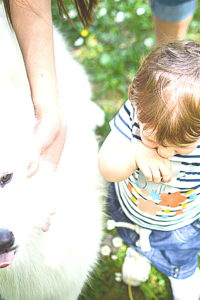Crate training as a dog owner, you want to ensure that your furry friend is happy and healthy. One way to achieve this is by training your dog. Crate training is a popular method of teaching your dog obedience and ensuring their safety. In this blog post, we will discuss the benefits of crate training and provide you with tips on how to get started.


Benefits of Crate Training
Crate training has many benefits for both you and your dog. Here are some of the most significant benefits:
- Safety and security: A crate can provide a safe and secure space for your dog to retreat to when they feel overwhelmed or anxious. This is especially important if you have a new puppy or rescue dog who is still adjusting to their new environment.
- House training: Crate training can be an effective tool for house training your dog. Dogs naturally avoid soiling their sleeping area, so by confining them to a crate, you can encourage them to hold their bladder until you take them outside.
- Preventing destructive behavior: Dogs have a natural urge to chew and dig. By providing your dog with a crate filled with toys and chews, you can redirect their destructive behavior and prevent them from damaging your home and belongings.
- Travel: If you plan on traveling with your dog, crate training can make the journey much smoother. A crate can provide a safe and familiar space for your dog to rest during the trip.
How to Get Started
Now that you know the benefits of crate training, here are some tips to help you get started:
- Choose the right crate: The size of the crate should be large enough for your dog to stand up, turn around, and lie down comfortably. However, it should not be too large, as your dog may use one end for sleeping and the other end for elimination.
- Introduce the crate gradually: Start by placing the crate in a quiet area of your home and encouraging your dog to explore it. Leave the door open and allow your dog to enter and exit the crate on their own.
- Use positive reinforcement: Reward your dog with treats and praise when they enter the crate voluntarily. You can also place treats and toys inside the crate to encourage them to enter.
- Increase time spent in the crate gradually: Begin by leaving your dog in the crate for short periods of time while you are at home, gradually increasing the duration. Eventually, your dog will be comfortable spending longer periods of time in the crate.
Crate training can be a highly effective method for teaching your furry friend important skills and ensuring their safety and happiness. Follow the steps outlined in this post, and you can get started on the crate training process as well as help your pet become comfortable and confident in their new space. Remember to be patient and consistent in your approach, providing plenty of positive reinforcement along the way. With time and practice, your dog will learn to view their crate as a secure and comfortable retreat, making life easier and more enjoyable for both of you. So if you’re ready to embark on this exciting journey, start by choosing the right crate, introducing your pet gradually, and establishing a routine that works for you both. With dedication and effort, you can make crate training a success and set your dog up for a lifetime of happiness and well-being.




